Food safety watchdogs have issued an urgent warning over the untold dangers of slushies, advising parents the summer favourite is not safe for children under ten.
The Food Standards Agency (FSA) has said today parents should not give children aged under seven slush ice drinks containing glycerol.
The super-sweet substance is often used in slushies, brightly coloured ice cold drinks that are a mainstay at cinemas, soft play and parties especially in the warmer months.
But in updated advice the FSA has now warned that children aged between seven and 10 should not have more than one 350ml slush ice drink a day – the same size as a can of Coca Cola.
Professor Robin May, Chief Scientific Advisor at the FSA, said: ‘As we head into the summer holidays, we want parents to be aware of the potential risks associated with slush ice drinks containing glycerol.
‘While these drinks may seem harmless and side effects are generally mild, they can, especially when consumed in large quantities over a short time, pose serious health risks to young children.’
The new warning comes amid a surge in horrifying reports of children collapsing after consuming the drinks.
One two-year-old girl was left ’20 minutes from death’ after having a slushy drink at her friend’s birthday party, according to her grandmother.

Arla Agnew (pictured) was left ’20 minutes from death’ after consuming a slushy drink at her friend’s birthday party, according to her grandmother
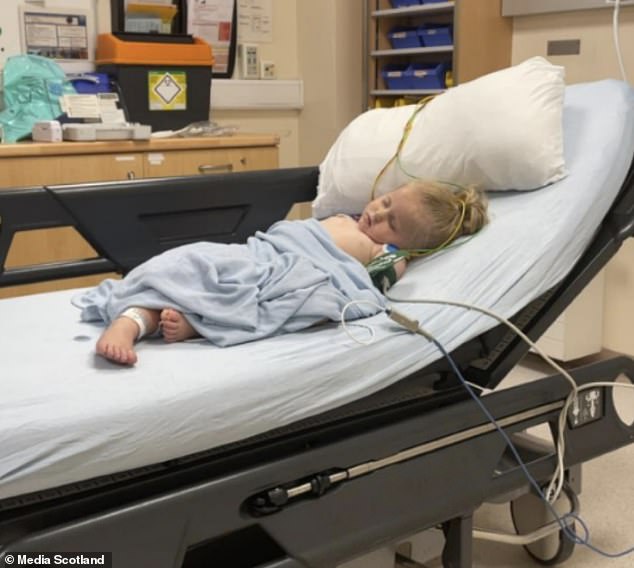
Her grandmother, Stacey Agnew said she knew something awry with the toddler, and was left terrified when she suddenly appeared lifeless
In March, doctors also blamed slushies for a spate of 21 hospitalisations in children who needed medical care within an hour of consuming the drinks.
Prof May added: ‘That’s why we’re recommending that children under seven should not consume these drinks at all, and children aged 7 to 10 should have no more than one 350ml serving.’
Glycerol, also called E422 or glycerine on some labels, is a naturally occurring alcohol and sugar substitute which is added to slushies to keep them in a semi-frozen state.
Once ingested, the substance is known to be able to absorb a great deal of water and sugar from the bloodstream, before being broken down by the liver and kidneys.
It’s this sudden loss of internal moisture and blood sugar that experts believe leads to the serious and potentially life-threatening reaction in younger children.
It is thought that when young children have several servings in a short period of time, glycerol can cause the body to go into shock, resulting in a loss of consciousness known as glycerol intoxication.
This updated advice applies to ready-to-drink slush ice drinks with glycerol in patches and home kits containing glycerol slush concentrates.
As the UK faces its third heatwave the FSA is urging parents to stay vigilant and check for glycerol on drinks labels before giving a slush ice drink to their children.
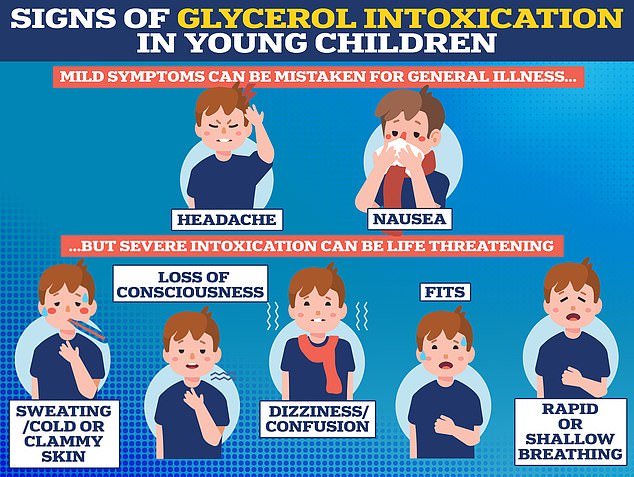
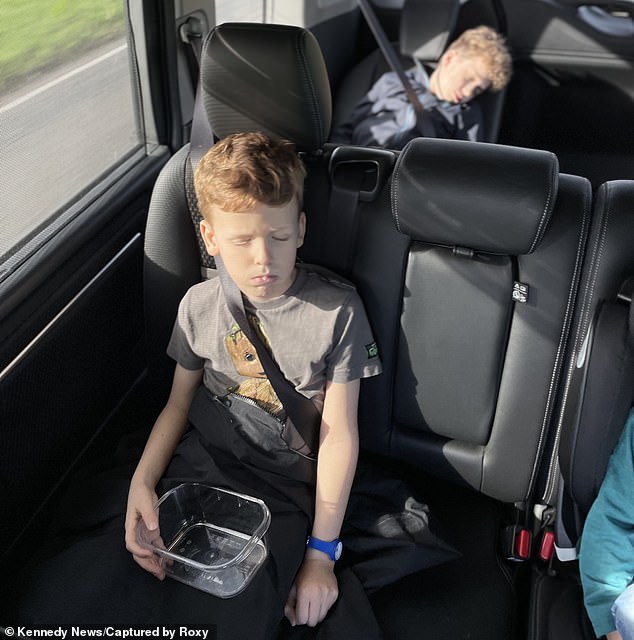
Roxy Wallis feared she would have to take her sons Austin (back) and Ted (front) to hospital after they suddenly fell ill and lethargic just minutes after consuming popular slushy drinks
If it is not clear whether a drink contains the substance, the FSA advises parents to err on the side of caution and simply not allow their children to drink it.
Prof May added: ‘We’re working closely with industry to ensure appropriate warnings are in place wherever these drinks are sold.
‘In the meantime, we are asking parents and carers to take extra care when buying drinks for young children, particularly during warmer months when consumption of ‘slushies’ typically increases.’
It comes as one grandmother last year told how her granddaughter was left ’20 minutes from death’ after consuming a slushy drink at her friend’s birthday party.
Arla Agnew became ‘grey’ and fell unconscious only half an hour after sipping half of the drink at the event on Saturday.
Stacey Agnew said she knew something awry with the toddler, and was left terrified when she suddenly appeared lifeless.
After rushing the tot to Gollaway Community Hospital, medics determined the child had gone into hypoglycemic shock – and the ice drink may have been to blame.
But the case was just one in a wave of young children being sickened after consuming slushies.
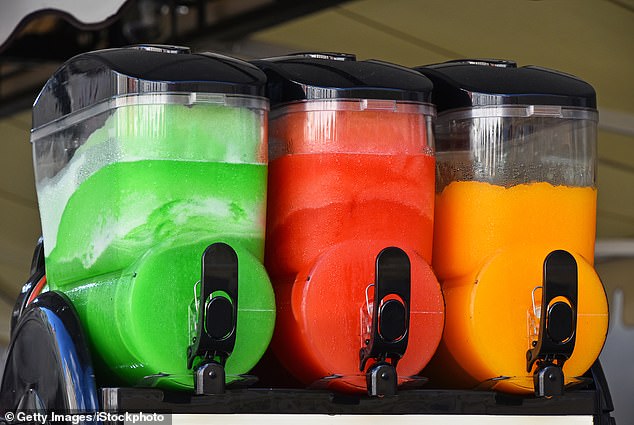
FSA chiefs based their recommendations on a 350ml-sized drink, similar to ones available in shops and cinemas across the UK
Earlier this year in March, a terrified mother also warned of the dangers of popular slushy drinks after her two, young sons suffered what appeared to be a dangerous reaction to the beverages.
Roxy Wallis, from Cambridgeshire, was shocked to find her sons vomiting, deathly pale and looking ‘lifeless’ minutes after consuming just 300ml of the drinks, equivalent to less than a can of Coke.
The 36-year-old believes they suffered from glycerol toxicity—dangerously low blood sugar triggered by iced artificially sweetened slushies.
In the same month, another mother also shared how her four-year-old was left ‘floppy and unconscious’ and rushed to hospital after consuming a drink at a children’s play centre.
Marnie Moore, from Lancashire, was rushed to hospital where she received urgent treatment for glycerol toxicity.
Her mother, Kim Moore, 35, is now calling for a ban on the drinks for under 12s.
‘If I hadn’t taken her to hospital, it may have had a different outcome,’ she said.
‘So many places promote free slushies when you play there but you’re promoting poison.
‘I don’t think they should be sold to kids 12 and under. And I personally wouldn’t allow my child to drink one at all. It’s not a risk I’m willing to take.’
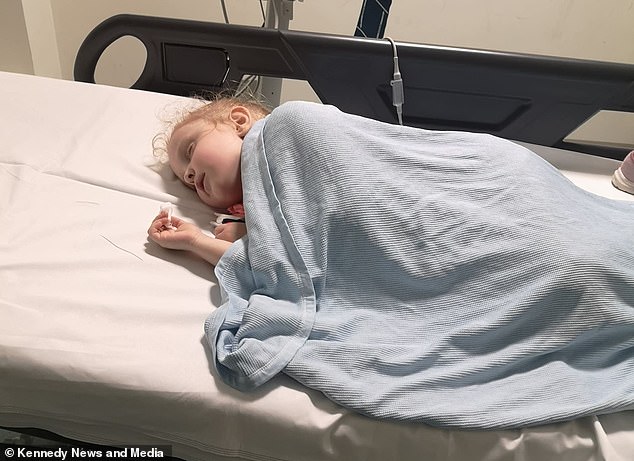
Four year-old Marnie Moore spent three days in hospital after consuming a 500ml slushy drink
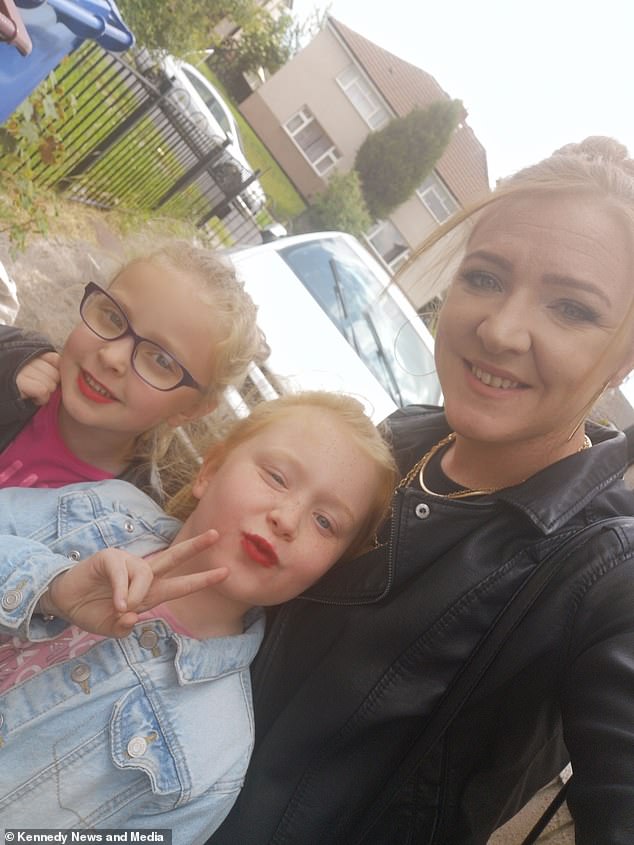
Kim Moore bought the slushy drinks for both her daughters: Marnie, four and Orla, six
Slushies were traditionally made with a sugar solution to prevent the liquid ingredients from fully freezing, at about 12g of sugar per 100ml.
But formulas using glycerol only need 5g per 100ml to achieve the same result.
Authorities have previously warned that just one 350ml drink containing the equivalent of about 17.5g of glycerol––which is around three teaspoons––could theoretically tip under-fours over the ‘safe’ threshold.
But experts warn older children can also be at risk of glycerol intoxication from consuming multiple E422-laden drinks in quick succession.
According to regulator the FSA most slushies contain around 16g of glycerol.
However, there is no maximum amount of glycerol that manufacturers have to legally adhere to and most brands don’t state how much glycerol is in each slushie.
Some brands like Slush Puppie have already removed glycerol from their recipes in response to the concerns about the ingredient.












